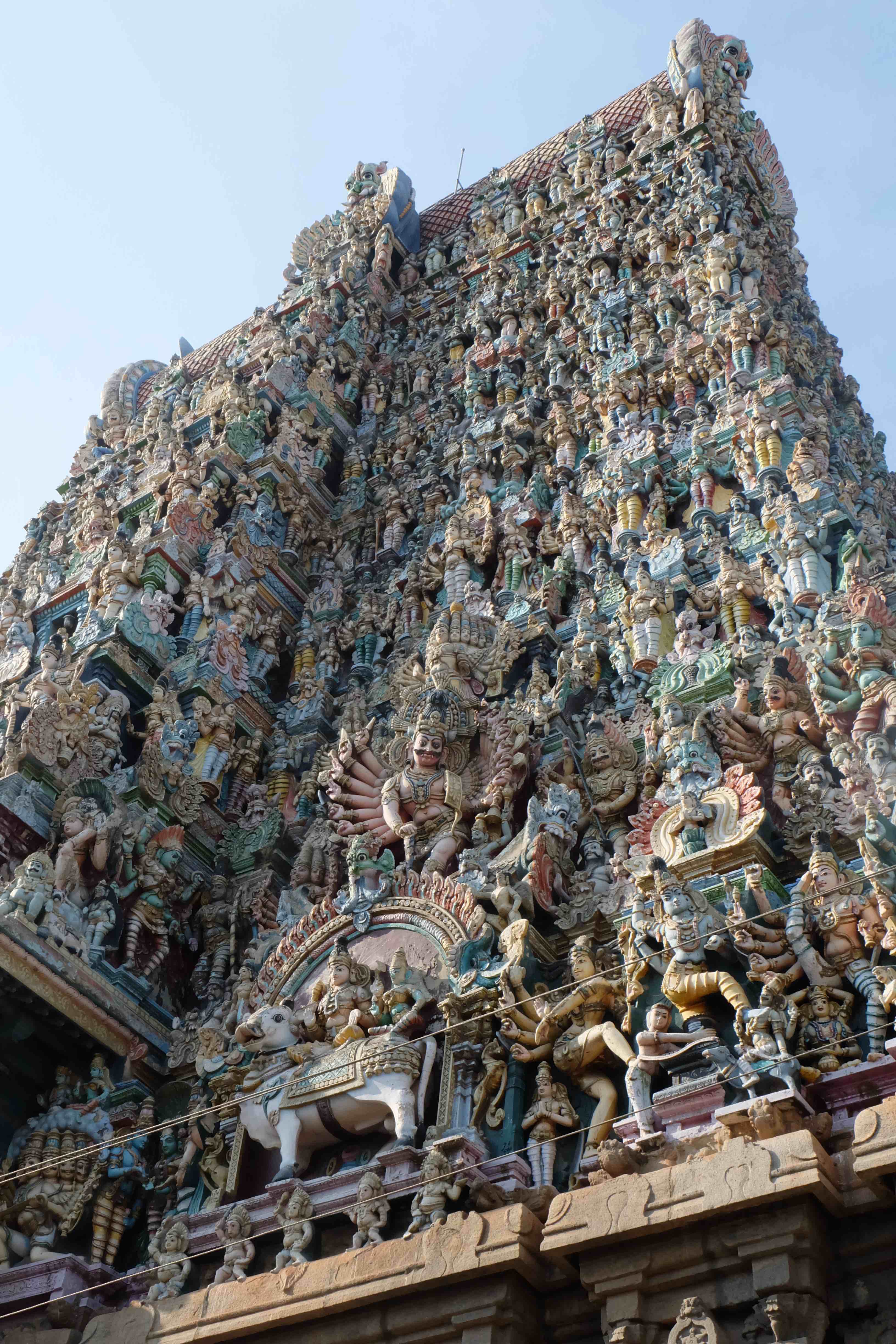
Over the years, Nagaloka’s students have come to Nagpur from 25 of India’s 29 states. One student from Madhya Pradesh told me that she never dreamed of having friends from outside her home-state before coming to Nagaloka. Similarly, for me, staying at Nagaloka has been an amazing opportunity to meet people from so many states that I haven’t yet had the chance to visit – Orissa, Arunachal Pradesh, Jharkhand, Chhattisgarh, Madhya Pradesh, among others. Even though there is great internal regional diversity among the student body at Nagaloka, it is unmistakable that we are all living in Maharashtra while we are there. As a foreigner who has spent most of her time in India within Maharashtra, sometimes it’s easy for me to miss the small signs of characteristic local culture.
Over the past week, I’ve taken some time to travel to Delhi, Jaipur, and Madurai. While initially I was hesitant to spend time away from my fieldsite, I have found these travels extremely helpful to gain perspective on what is unique about Nagaloka and the Vidarbha region of Maharashtra where I have spent my time so far. In Delhi, I attended the American Institute of Indian Studies Junior Fellowship Conference where I was able to meet the other graduate students on fellowship this year and hear about their research experiences. While the projects were extremely varied in method and topic, it was inspiring both to hear about other researchers’ challenges, questions, and successes in the field. After hearing others’ responses to my research so far, I was able to generate some ideas about which directions I want to go in my research. The most surprising reaction I had to my experience at the AIIS Junior Fellows Conference was that I felt visceral culture shock from my quick re-immersion in the American academic world. I realized that the clothes that I considered a dressed up and professional at my fieldsite left me feeling uncomfortable and out of place at the conference. Conversing about conference proposal submissions and the academic job market, mundane topics in my grad student life, felt suddenly more foreign than speaking in Hindi. I woke up with the Pali chants that are sung twice daily at Nagaloka running through my head. It was a definite reminder of how much fieldwork changes you as a researcher in ways that often go unnoticed.
After Delhi, I spent two days in Jaipur with my friend Alisa from the SU Anthropology department. I hadn’t returned to Jaipur since 2014 when I studied Hindi at the AIIS Summer Language Program there, so it was a lovely experience to return to a city I remembered fondly and spend time with a good friend. She is in the data processing and writing up phase of her research. At our different phases, we both found it useful to bounce our ideas off each other as we considered the progress of our respective projects. I also had the pleasure of meeting her research partner Surendra who has been working with her throughout her fieldwork and hear some of his responses to my findings which helped me see some of my questions from a totally different perspective.
The last stop of my short tour was in Madurai, Tamil Nadu to visit recent graduate of our own MA program Julie Edelstein during her year studying Tamil with AIIS. Since I began studying Indian religions I have had a curiosity to travel to Tamil Nadu, so it has been exciting to see some of the things I have only read and heard about in person. Julie’s life and experiences in Madurai are so different from mine in Nagpur in so many ways even though our approaches to research are quite similar. For instance, in large part due to my research interests and interlocutors, I have only ever visited one Hindu temple in Nagpur. I had never been in a temple that even came close to the size of the Meenakshi Temple in Madurai. Experiencing the beautiful sculpture and architecture firsthand was totally different than simply hearing it described. Julie also took me to visit Pandikoyil, the fieldsite of her MA thesis, and it was a special experience to see a place I had heard so much about and meet some of the people from her stories. Of course, Julie was a wonderful host and took me to eat at all the best spots in Madurai and fill my cravings for Tamil food which may just be my favorite cuisine in the world. Even though I was only able to stay in Madurai for a short time, seeing a completely different slice of Indian culture was incredibly valuable for thinking about my own research. Also, of course, visiting Julie renewed my gratitude for the friendship and support that we have built in our community of Religion Department graduate students.
All in all, while before I left I was extremely hesitant to spend time away from Nagpur and was worried it would be a waste of my time, I have found that some new experiences and reflection time are incredibly useful in the research process. It also made me realize how much I have acculturated to my life in Nagpur and how much I miss my friends at my research site. As I wrote in a previous post, part of fieldwork is being open to change. I thought I had noted most of the ways that my fieldwork was changing me, but by taking some time away, I was able to notice other things that had changed like new tendencies in how I analyze social interactions or my sense of personal aesthetics. Finally, I cannot close out this entry without taking some time to acknowledge the incredible work of the American Institute of Indian Studies which is not only supporting my year here in India, but is enabling so much important research and opportunities for rich cultural engagement throughout India.
---------------------------------------------
Contact Information
Mallory Hennigar
